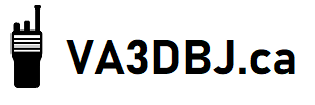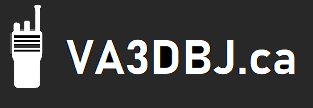International Space Station
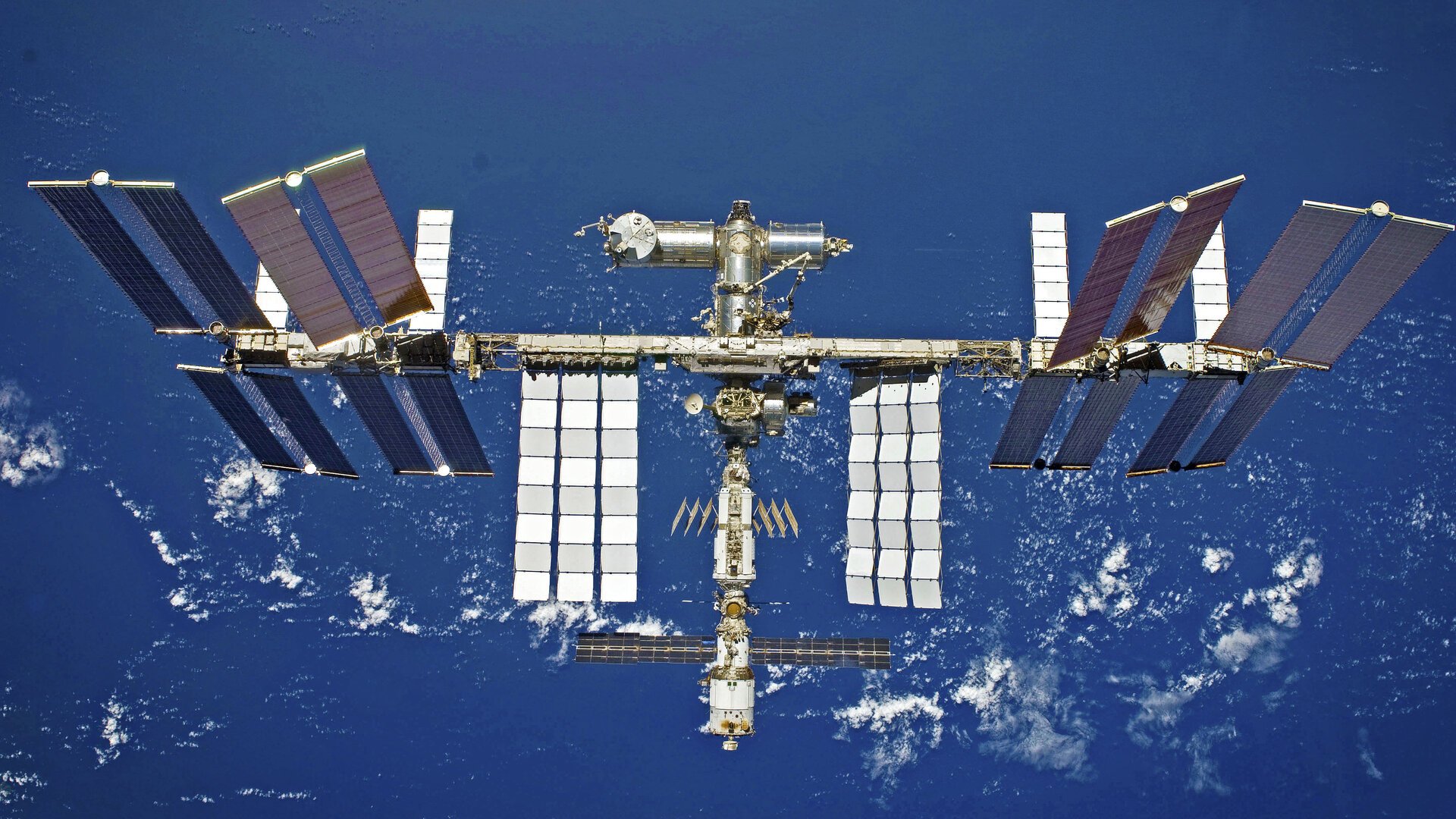
The International Space Station (ISS) is a space station, or a habitable artificial satellite, in low Earth orbit. Its first component launched into orbit in 1998, the last pressurized module was fitted in 2011, and the station is expected to operate until 2028. Development and assembly of the station continues, with components scheduled for launch in 2018 and 2019. The ISS is the largest human-made body in low Earth orbit and can often be seen with the naked eye from Earth. The ISS consists of pressurized modules, external trusses, solar arrays, and other components. ISS components have been launched by Russian Proton and Soyuz rockets, and American Space Shuttles.

The ISS serves as a micro-gravity and space environment research laboratory in which crew members conduct experiments in biology, human biology, physics, astronomy, meteorology, and other fields. The station is suited for the testing of spacecraft systems and equipment required for missions to the Moon and Mars. The ISS maintains an orbit with an altitude of between 330 and 435 km (205 and 270 mi) by means of reboost manoeuvres using the engines of the Zvezda module or visiting spacecraft. It completes 15.54 orbits per day.
The ISS programme is a joint project among five participating space agencies: NASA, Roscosmos, JAXA, ESA, and CSA. The ownership and use of the space station is established by intergovernmental treaties and agreements. The station is divided into two sections, the Russian Orbital Segment (ROS) and the United States Orbital Segment (USOS), which is shared by many nations. As of January 2018, the American portion of ISS is being funded until 2025. Roscosmos has endorsed the continued operation of ISS through 2024 but has proposed using elements of the Russian Orbital Segment to construct a new Russian space station called OPSEK.
Amateur Radio on the International Space Station (ARISS)
ARISS was created and is managed by an international working group, including several countries in Europe as well as Japan, Russia, Canada, and the USA. The organization is run by volunteers from the national amateur radio organizations and the international AMSAT (Radio Amateur Satellite Corporation) organizations from each country. Since ARISS is international in scope, the team coordinates locally with their respective space agency and as an international team through ARISS working group meetings, teleconferences and webinars.
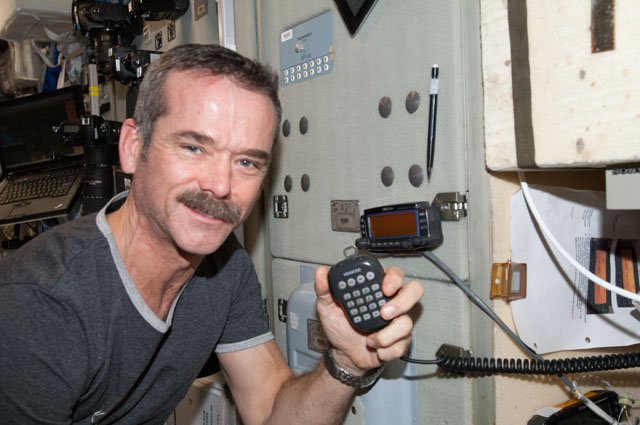
ARISS History
ARISS, or Amateur Radio on the International Space Station (ISS), was formed to design, build and operate Amateur Radio equipment in space for educational purposes.
Amateur Radio was a regular payload on Shuttle missions beginning with the STS-9 mission in November 1983, when Owen Garriott, W5LFL, carried a hand-held ham radio aboard Space Shuttle Columbia. The Shuttle Amateur Radio Experiment (SAREX) provided students with the unique opportunity to talk directly with astronauts in the Shuttle while they orbited the Earth traveling 17,000 miles per hour. With the help of Amateur Radio operators, students could attempt to contact the astronauts flying on a SAREX mission through voice, packet (computer) radio, or television, depending on which equipment configuration the Shuttle takes into space. Through voice communication students asked questions about the experiments being conducted on the mission and what it is like living in space. When the astronauts were asleep, a robot computer Amateur Radio station aboard the Shuttle made contact with hundreds of hams around the world. Students could track the Shuttle’s orbit using computer software, “eavesdrop” on Shuttle communications, and listen to NASA mission commentary and bulletins about astronaut-planned transmissions.
In 1996, delegates from major national Amateur Radio organizations, such as ARRL, and from national Amateur Radio satellite organizations, such as AMSAT, in the eight nations involved with the international space station, signed a Memorandum of Understanding to form ARISS.
NASA and the Russian space organization Energia have signed agreements that spell out where the physical location of the Amateur Radio equipment will be set up on the ISS. A technical team was officially established by NASA to serve as the interface to support hardware development, crew training and on-orbit operations.
In the United States, the ARRL and AMSAT provide leadership and consultation. AMSAT donates and builds hardware as well as ensuring all safety and qualification tests required by the space agencies are successfully completed so the equipment can fly. The Russians provided ports for antennas that were mounted on the station’s Zvezda Service Module — the space station unit that provides living quarters for the astronauts and cosmonauts.
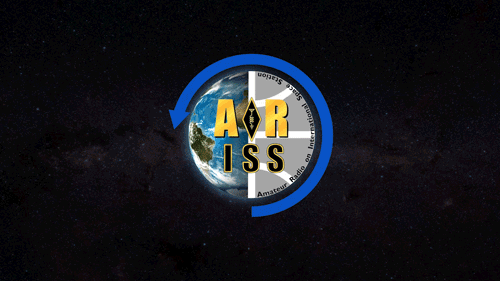
United States and Russian teams have trained astronauts and cosmonauts to operate the equipment. The Italian team has designed and built antennas. The German team has built sophisticated repeater stations that will allow crews to make recorded reports on their daily activities and permit hams on Earth better contacts with men and women aboard the station. The Italian team has designed and built antennas, and most recently conceived and engineered the new HamTV system in process of deployment.
The sponsoring agencies have stated that they consider access to a ham radio system a psychological support for the crews, providing them with a way to be connected and to do public outreach while they are detached in space for many weeks at a time. In addition, Amateur Radio is a platform that allows astronauts, to quote NASA, “to offer an educational resource to students as only NASA can.” Amateur Radio provides a contingency communications network for the ISS as well.
ARISS Contacts
Some ISS crew members make random, unscheduled, amateur radio voice contacts with earth-bound radio amateurs, often called “hams”. They can make radio contacts during their breaks, pre-sleep time and before and after mealtime. Astronauts have contacted thousands of hams around the world. The work schedules of the ISS crew dictate when they are able to operate the radios. The crew’s usual waking period is 0730 – 1930 UTC. The most common times to find a crew member making casual periods are about one hour after waking and before sleeping, when they have personal time. They’re usually free most of the weekend, as well. (The current crew work schedule is published on the NASA website.)
The crew can operate the 2-meter packet radio in unattended mode, and hams can make contacts with the ISS station when the crew members are working. Hams can also communicate with each other using the ISS packet (computer) radio mode, or receive slow scan television mode images. It all depends on what equipment is in service in space.
A typical ground station for contacting the ISS station includes a 2-meter FM transceiver and 25-100 watts of output power. A circularly polarized crossed-Yagi antenna capable of being pointed in both azimuth (North-South-East-West) and elevation (degrees above the horizon) is desirable. But successful contacts have even been made with vertical and ground plane antennas.
Amateur Radio Frequencies in Use
The following frequencies are currently used for Amateur Radio ISS contacts (QSOs):
Voice and SSTV Downlink: 145.80 (Worldwide)
Voice Uplink: 144.49 for ITU Regions 2 and 3
Voice Uplink: 145.20 for ITU Region 1
UHF/VHF Repeater Downlink: 437.80 UHF/VHF Repeater Uplink: 145.99
VHF Packet Uplink and Downlink: 145.825 (Worldwide)
UHF Packet Uplink and Downlink: 437.550
Callsigns:
Russian: RS0ISS
USA: NA1SS
European: DP0ISS, OR4ISS, IR0ISS
Packet Station Mailbox: RS0ISS-11 and RS0ISS-1

Most ARISS operations are split-frequency (each station uses separate receive and transmit frequencies). The downlink is the earth station’s receiving frequency. The uplink is the earth station’s transmitting frequency. Earth stations can listen to the downlink frequency and transmit on the uplink frequency when the ISS is in range and crew members are on the air. Please do not transmit on the ISS downlink frequency.
Current status of ISS ham radio stations
as of November 18, 2022
Columbus Module radios:
- IORS (Kenwood D710GA) – STATUS – Configured. Default mode is for cross band repeater (145.990 MHz up {PL 67} & 437.800 MHz down).
- Powered OFF for RS EVA on November 25. OFF Nov. 24 about 16:30 UTC. ON Nov 26 about 16:00 UTC.
- Powered OFF for US EVA on November 29. OFF Nov. 28 about 16:15 UTC. ON Nov 30 about 10:00 UTC.
- Powered OFF for US EVA on December 03. OFF Dec. 02 about 17:00 UTC. ON Dec 04 about 18:15 UTC.
- Powered OFF for RS EVA on December 06.
- Powered OFF for RS EVA on December 21.
- Capable of supporting USOS scheduled voice contacts, packet and voice repeater ops.
Service Module radios:
- IORS (Kenwood D710GA) – STATUS – Configured. Default mode is for packet operations (145.825 MHz up & down).
- Powered OFF for RS EVA on November 25. OFF Nov. 24 about 16:30 UTC. ON Nov 26 about 16:00 UTC.
- Powered OFF for US EVA on November 29. OFF Nov. 28 about 16:15 UTC. ON Nov 30 about 10:00 UTC.
- Powered OFF for US EVA on December 03. OFF Dec. 02 about 17:00 UTC. ON Dec 04 about 18:15 UTC.
- Powered OFF for RS EVA on December 06.
- Powered OFF for RS EVA on December 21.
- Capable of supporting ROS scheduled voice contacts, packet, SSTV and voice repeater ops.
Share this:
- Click to share on Facebook (Opens in new window) Facebook
- Click to share on X (Opens in new window) X
- Click to share on Bluesky (Opens in new window) Bluesky
- Click to share on Threads (Opens in new window) Threads
- Click to share on Mastodon (Opens in new window) Mastodon
- Click to share on Pinterest (Opens in new window) Pinterest
- Click to share on LinkedIn (Opens in new window) LinkedIn
- Click to share on Reddit (Opens in new window) Reddit
- Click to share on Tumblr (Opens in new window) Tumblr
- Click to email a link to a friend (Opens in new window) Email
